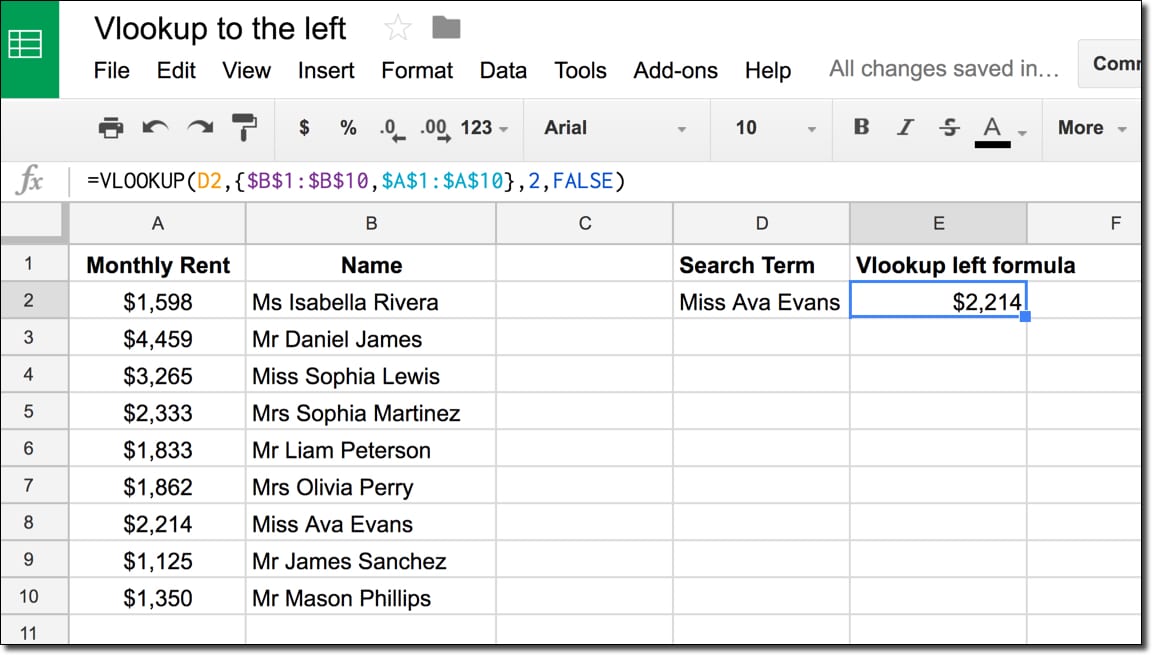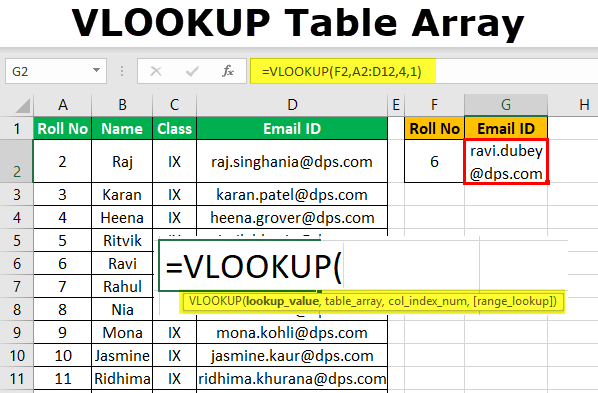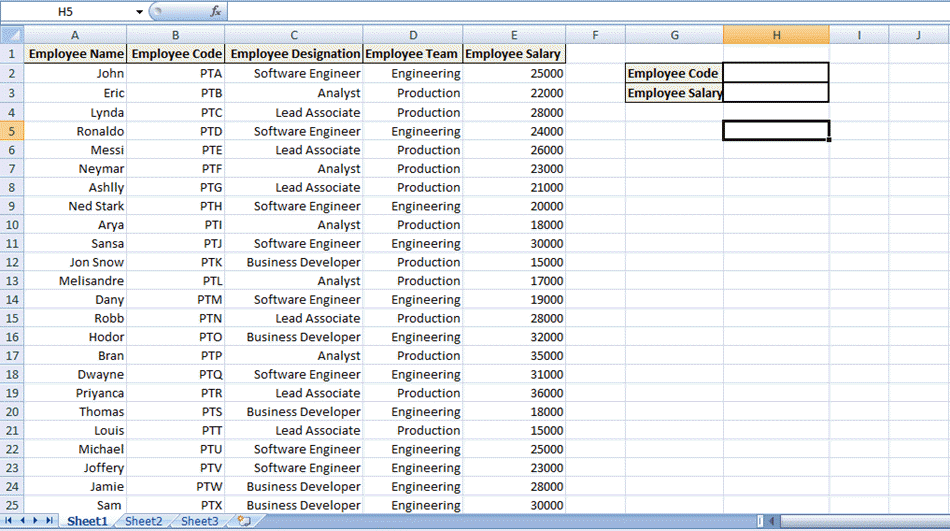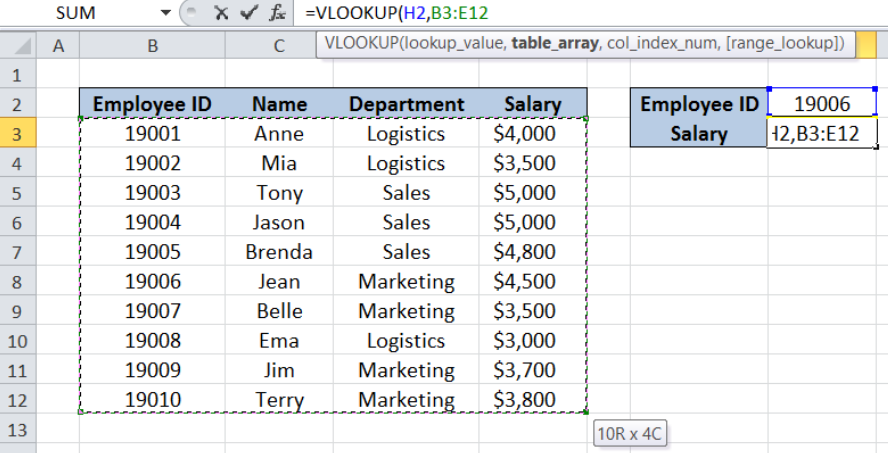Excel Vlookup Can Be Fun For Anyone
Usage VLOOKUP when you need to discover points in a table or an array by row. For instance, seek out a rate of an automobile part by the part number, or discover an employee name based upon their staff member ID. In its most basic type, the VLOOKUP feature claims: =VLOOKUP(What you intend to look up, where you wish to try to find it, the column number in the range consisting of the value to return, return an Approximate or Exact suit-- suggested as 1/TRUE, or 0/FALSE).
Utilize the VLOOKUP function to seek out a worth in a table. Syntax VLOOKUP (lookup_value, table_array, col_index_num, [range_lookup] For instance: =VLOOKUP(A 2, A 10: C 20,2, REAL) =VLOOKUP("Fontana", B 2: E 7,2, FALSE) =VLOOKUP(A 2,'Customer Information and facts'! A: F,3, FALSE) Debate name Description lookup_value (required) The value you intend to search for. The value you wish to seek out must be in the first column of the variety of cells you specify in the table_array disagreement.
Lookup_value can be a value or a reference to a cell. table_array (required) The series of cells in which the VLOOKUP will look for the lookup_value as well as the return worth. You can make use of a named array or a table, as well as you can utilize names in the debate as opposed to cell references.
The cell range also needs to consist of the return value you intend to discover. Discover exactly how to select arrays in a worksheet. col_index_num (needed) The column number (starting with 1 for the left-most column of table_array) which contains the return value. range_lookup (optional) A rational worth that defines whether you want VLOOKUP to find an approximate or a precise suit: Approximate match - 1/TRUE thinks the very first column in the table is arranged either numerically or alphabetically, as well as will after that browse for the closest worth.
As an example, =VLOOKUP(90, A 1: B 100,2, TRUE). Specific match - 0/FALSE look for the specific worth in the initial column. As an example, =VLOOKUP("Smith", A 1: B 100,2, FALSE). There are four pieces of info that you will need in order to build the VLOOKUP syntax: The value you wish to search for, additionally called the lookup worth.
Little Known Facts About What Is Vlookup In Excel.
Remember that the lookup value should always be in the initial column in the range for VLOOKUP to function properly. For instance, if your lookup value remains in cell C 2 after that your array need to begin with C. The column number in the range which contains the return worth. As an example, if you specify B 2:D 11 as the variety, you need to count B as the first column, C as the second, and so forth.
If you don't define anything, the default worth will constantly be TRUE or approximate match. Currently place all of the above with each other as follows: =VLOOKUP(lookup worth, variety having the lookup value, the column number in the array containing the return worth, Approximate suit (TRUE) or Specific suit (FALSE)). Below are a couple of instances of VLOOKUP: Trouble What went wrong Incorrect worth returned If range_lookup is REAL or neglected, the very first column needs to be arranged alphabetically or numerically.

Either sort the very first column, or use FALSE for a specific suit. #N/ A in cell If range_lookup holds true, then if the value in the lookup_value is smaller sized than the tiniest value in the initial column of the table_array, you'll obtain the #N/ A mistake value. If range_lookup is FALSE, the #N/ An error value suggests that the specific number isn't discovered.

#REF! in cell If col_index_num is higher than the variety of columns in table-array, you'll obtain the #REF! mistake value. For more details on fixing #REF! mistakes in VLOOKUP, see Just how to fix a #REF! mistake. #VALUE! in cell If the table_array is much less than 1, you'll get the #VALUE! mistake value.
#NAME? in cell The #NAME? mistake value normally indicates that the formula is missing out on quotes. To look up an individual's name, make certain you utilize quotes around the name in the formula. For example, get in the name as "Fontana" in =VLOOKUP("Fontana", B 2: E 7,2, FALSE). To learn more, see How to remedy a #NAME! error.
Vlookup Excel Fundamentals Explained
Discover how to use outright cell references. Don't store number or day values as text. When searching number or day worths, make sure the data in the very first column of table_array isn't saved as text worths. Otherwise, VLOOKUP might return an inaccurate or unanticipated worth. Arrange the initial column Type the first column of the table_array prior to utilizing VLOOKUP when range_lookup holds true.


An enigma matches any type of single character. An asterisk matches any kind of sequence of characters. If you wish to locate an actual concern mark or asterisk, type a tilde (~) in front of the personality. As an example, =VLOOKUP("Fontan?", B 2: E 7,2, FALSE) will look for all instances of Fontana with a last letter that could differ.

When looking message values in the initial column, see to it the information in the first column doesn't have leading areas, trailing areas, inconsistent usage of straight (' or") and also curly (' or ") quote marks, or nonprinting personalities. In these cases, VLOOKUP might return an unanticipated value.
You can constantly ask an expert in the Excel User Voice. Quick Referral Card: VLOOKUP refresher Quick Recommendation Card: VLOOKUP troubleshooting tips You Tube: VLOOKUP videos from Excel area experts Whatever you need to find out about VLOOKUP Just how to remedy a #VALUE! error in the VLOOKUP feature Just how to remedy a #N/ A mistake in the VLOOKUP feature Overview of formulas in Excel Exactly how to prevent broken solutions Detect errors in formulas Excel functions (alphabetical) Excel features (by group) VLOOKUP (complimentary sneak peek).
To determine shipping expense based on weight, you can utilize the VLOOKUP feature. In the instance revealed, the formula in F 8 is: =VLOOKUP(F 7, B 6: C 10,2,1)* F 7 This formula makes use of the weight to discover the proper "cost per kg" then ... To override output from VLOOKUP, you can nest VLOOKUP in the IF feature.
vlookup in excel null vlookup in excel index match vlookup in excel o365